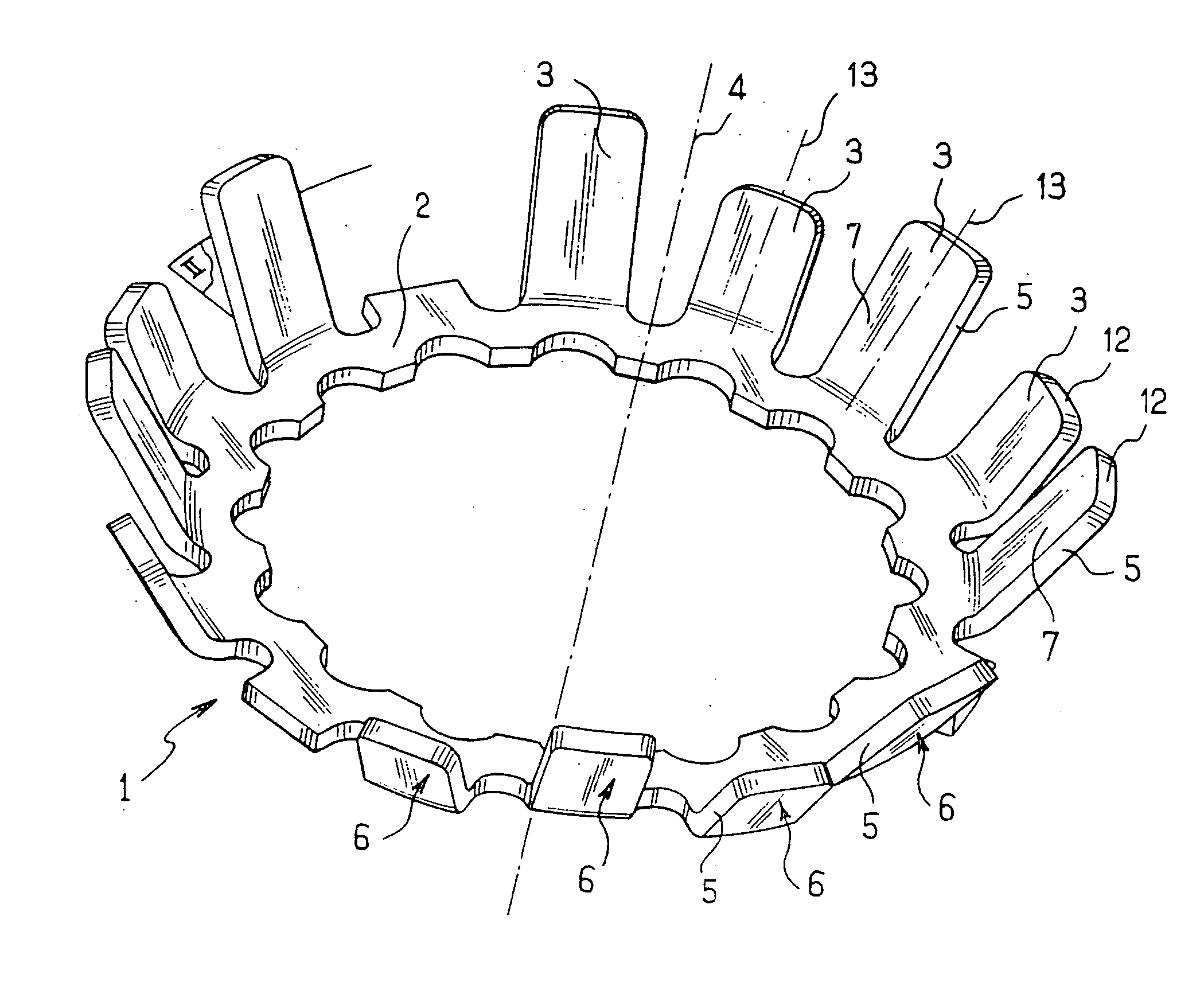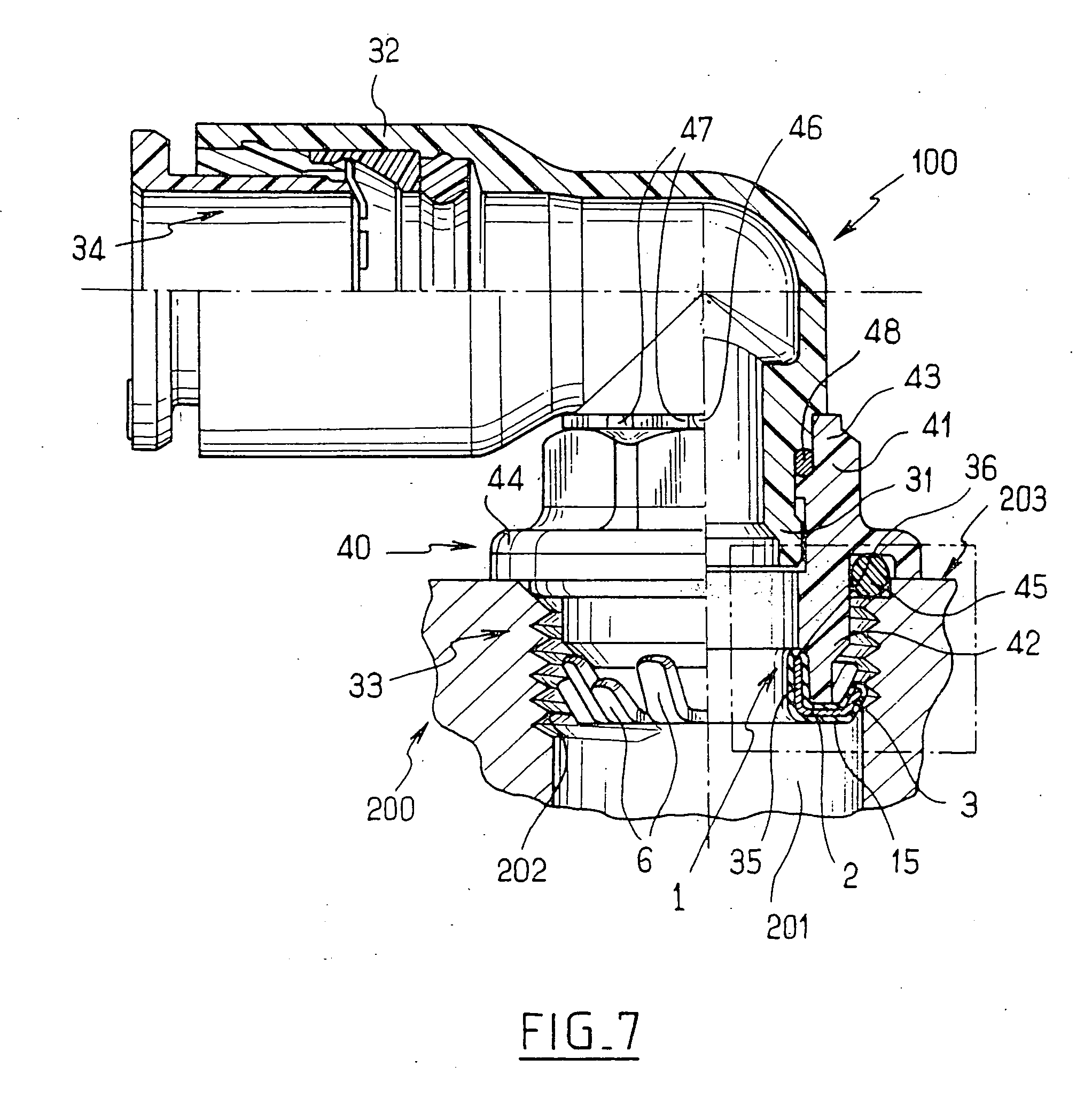Non-aggressive anchor washer
a washer and non-aggressive technology, applied in the direction of washers, snap-action fasteners, dental implants, etc., can solve the problems of affecting the operation of the washer
- Summary
- Abstract
- Description
- Claims
- Application Information
AI Technical Summary
Benefits of technology
Problems solved by technology
Method used
Image
Examples
first embodiment
[0025] With reference to FIGS. 1 and 2, the anchor washer constituting the invention, given overall reference 1, comprises an annular portion 2 having an outer circumference from which teeth 3 extend outwards. These teeth 3 are inclined relative to a central axis 4 of the annular portion 2. Each tooth 3 comprises two side faces 5 between which there extends a surface 6 (this surface is referred to below as the “sliding” surface 6) facing away from the central axis 4, and an opposite surface 7 facing the central axis 4. The sliding surface 6 has rounded end portions 9 connected to edges 10 connecting with the side faces 5 (the end portions 9 are not visible in FIG. 1). The edges 10 are thus set back from the central portion 11 of the sliding surface 6. Each tooth further comprises an end surface or terminal surface 12. The anchor washer 1 is made of metal, in this case of steel.
[0026] The anchor washer 1 is for fitting to a coupling device comprising a tubular body having a first con...
second embodiment
[0029] In a second embodiment shown in FIG. 3, the end portions 9 are shaped by chamfers. The edges 10 are thus set back from the central portion 11 of the sliding surface 6.
third embodiment
[0030] In a third embodiment shown in FIG. 4, the teeth 3 are curved about a longitudinal axis 13 of each tooth 3 so that the sliding surface 6 presents convex curvature. The edges 10 are thus set back from the central portion 11 of the sliding surface 6.
PUM
 Login to View More
Login to View More Abstract
Description
Claims
Application Information
 Login to View More
Login to View More - R&D
- Intellectual Property
- Life Sciences
- Materials
- Tech Scout
- Unparalleled Data Quality
- Higher Quality Content
- 60% Fewer Hallucinations
Browse by: Latest US Patents, China's latest patents, Technical Efficacy Thesaurus, Application Domain, Technology Topic, Popular Technical Reports.
© 2025 PatSnap. All rights reserved.Legal|Privacy policy|Modern Slavery Act Transparency Statement|Sitemap|About US| Contact US: help@patsnap.com



